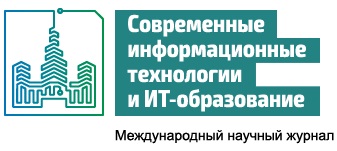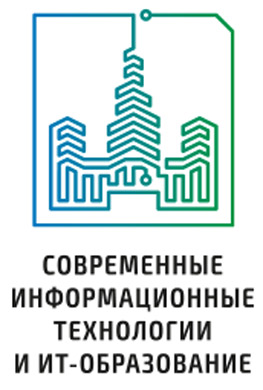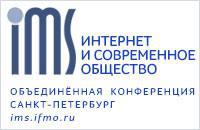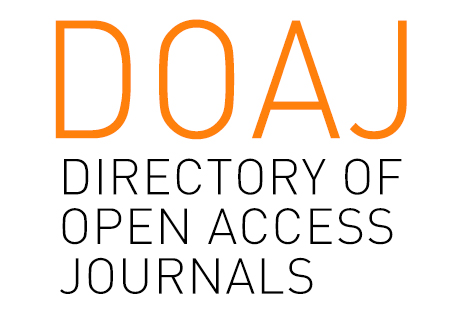Повышение временного разрешения оценки состояния процесса с помощью фильтрации Калмана
Аннотация
Рассматриваются вопросы получения оценки состояния процесса с использованием аппарата калмановской фильтрации при наличии измерителя, выдающего показания с временным разрешением меньше требуемого. Выделены два пути решения проблемы: повышение частоты следования отсчетов выходных данных фильтра при использовании данных одного датчика и введение в систему второго, удовлетворяющего требованию по временному разрешению выдаваемых данных, но недостаточно точного, с последующим комплексированием показаний двух датчиков. Проведен анализ известных методов повышения разрешения оценок при использовании одного измерителя, предложены модификации. С использованием этих результатов предлагаются варианты алгоритмов комплексирования, основанные на известных ранее разработанных для объединения показаний с одинаковыми частотами следования и адаптированные под рассматриваемую задачу, в том числе метод объединения измерений на входе фильтра Калмана, метод объединения векторов состояния и его последующие модификации. Также приводятся известные из литературы алгоритмы комплексирования, изначально разработанные для объединения показаний с различными частотами следования. Проводится сравнительный анализ результатов работы всех алгоритмов на примере оценивания процесса по измерениям с различными уровнями шумов, различным соотношением интервалов следования показаний датчиков, исследуется их поведение при различных частотных свойствах фильтрующих контуров. Приводятся соображения по выбору оптимального для конкретного набора значений метода. Проведено сравнение ошибки оценивания с получаемой при использовании одного измерителя, сделаны выводы относительно целесообразности использования каждого из двух обозначенных в начале путей.
Литература
[2] Qiu A., Shi J., Wang S. Fault Detection for Dynamic Systems based on Multirate Sampling. International Journal of Online and Biomedical Engineering. 2013; 9(6):62-65. Available at: https://www.online-journals.org/index.php/i-joe/article/view/3130 (accessed 23.07.2019). (In Eng.)
[3] Kaya M., Denasi A., Scheggi S., Agbahca E., Yoon C., Gracias D.H., Misra S. A Multi-Rate State Observer for Visual Tracking of Magnetic Micro-Agents Using 2D Slow Medical Imaging Modalities. In: 2018 IEEE/RSJ International Conference on Intelligent Robots and Systems (IROS), Madrid, 2018, pp. 1-8. DOI: 10.1109/IROS.2018.8594349
[4] Pakzad M.A. Kalman Filter Design for Time Delay Systems. WSEAS Transactions on Systems. 2012; 11(10):551-560. Available at: http://www.wseas.org/multimedia/journals/systems/2012/55-535.pdf (accessed 23.07.2019). (In Eng.)
[5] Ellis M.F., Taylor T.W., Gonzalez V., Jensen K.F. Estimation of the molecular weight distribution in batch polymerization. ALChE Journal. 1988; 34(8):1341-1353. (In Eng.) DOI: 10.1002/aic.690340812
[6] Kurumatani H., Katsura S. State Estimation Based On Multirate Kalman Filter For Power Systems Driven By Switching Inverter. IEEJ Journal of Industry Applications. 2019; 8(2):231-239. (In Eng.) DOI: 10.1541.ieejjia.8.231
[7] Armesto L., Tomero J. Dual-Rate High Order Holds Based on Primitive Functions. In: Proceedings of the 2003 American Control Conference, 2003, Denver, CO, USA, 2003, pp. 1140-1145. (In Eng.) DOI: 10.1109/ACC.2003.1239741
[8] Sahebsara M., Chen T., Shah S.L. Optimal Fast-Rate Soft-sensor Design for Multi-rate Processes. In: 2006 American Control Conference, Minneapolis, MN, 2006, pp. 6. (In Eng.) DOI: 10.1109/ACC.2006.1655485
[9] Willner D., Chang C.B., Dunn K.P. Kalman filter algorithms for a multi-sensor system. In: 1976 IEEE Conference on Decision and Control including the 15th Symposium on Adaptive Processes, Clearwater, FL, USA, 1976, pp. 570-574. (In Eng.) DOI: 10.1109/CDC.1976.267794
[10] Bar-Shalom Y., Campo L. The Effect of the Common Process Noise on the Two-Sensor Fused-Track Covariance. IEEE Transactions on Aerospace and Electronic Systems. 1986; AES-22(6):803-805. (In Eng.) DOI: 10.1109/TAES.1986.310815
[11] Hara T., Tomizuka M. Multi-rate Controller for Hard Disk Drive with Redesign of State Estimator. In: Proceedings of the 1998 American Control Conference. ACC (IEEE Cat. No.98CH36207), Philadelphia, PA, USA, 1998, vol. l.5, pp. 3033-3037. (In Eng.) DOI: 10.1109/ACC.1998.688414
[12] Steffes S. Computationally Distributed Real-Time Dual Rate Kalman Filter. Journal of Guidance, Control and Dynamics. 2014; 37(4):1064-1068. (In Eng.) DOI: 10.2514/1.G000179
[13] Roecker J.A., McGillem C.D. Comparison of two-sensor tracking methods based on state vector fusion and measurement fusion. IEEE Transactions on Aerospace and Electronic Systems. 1988; 24(4):447-449. (In Eng.) DOI: 10.1109/7.7186
[14] Anitha R., Renuka S., Abudhahir A. Multi sensor data fusion algorithms for target tracking using multiple measurements. In: 2013 IEEE International Conference on Computational Intelligence and Computing Research, Enathi, 2013, pp. 1-4. (In Eng.) DOI: 10.1109/ICCIC.2013.6724283
[15] Gao J.B., Harris C.J. Some remarks on Kalman Filters for the multisensory fusion. Information Fusion. 2002; 3(3):191-201. (In Eng.) DOI: 10.1016/S1566-2535(02)00070-2
[16] Guo Y., Zhao Y., Huang B. Development of soft sensor by incorporating the delayed infrequent and irregular measurements. Journal of Process Control. 2014; 24(11):1733-1739. (In Eng.) DOI: 10.1016/j.jprocont.2014.09.006
[17] Yan L.P., Liu B.S., Zhou D.H. The modeling and estimation of asynchronous multirate multisensory dynamic systems. Aerospace Science and Technology. 2006; 10(1):63-71. (In Eng.) DOI: 10.1016/j.ast.2005.09.001
[18] Dhuli R., Kandagadla M., Lall B. Multirate Kalman Filter for Sensor Data Fusion. In: Proceedings of the Fifteenth National Conference on Communications (NCC 2009), January 16-18, 2009, Guwahati, India, 2009, pp. 229-233. Available at: http://www.ncc.org.in/authorsearchindex.php?t=Kandagadla (accessed 23.07.2019). (In Eng.)
[19] Armesto L., Tornero J., Vincze M. Fast Ego-motion Estimation with Multi-rate Fusion of Inertial and Vision. International Journal of Robotics Research. 2007; 26(6):577-589. (In Eng.) DOI: 10.1177/0278364907079283
[20] Wang Y., Kosti´ D., Jansen S.T.H., Nijmeijer H. Filling the Gap between Low Frequency Measurements with Their Estimates. In: 2014 IEEE International Conference on Robotics and Automation (ICRA), Hong Kong, 2014, pp. 175-180. (In Eng.) DOI: 10.1109/ICRA.2014.6906606
[21] Xie L., Zhu Y., Huang B., Zheng Y. Kalman filtering approach to multirate information fusion for soft sensor development. In: 2012 15th International Conference on Information Fusion, Singapore, 2012, pp. 641-648. Available at: https://ieeexplore.ieee.org/stamp/stamp.jsp?tp=&arnumber=6289863&isnumber=6289713 (accessed 23.07.2019). (In Eng.)
[22] Sun S.L., Deng Z.L. Multi-sensor optimal information fusion Kalman filter. Automatica. 2004;40(6):1017-1023. (In Eng.) DOI: 10.1016/j.automatica.2004.01.014
[23] Feddaoui A., Boizot N., Busvelle E., Hugel V. High-gain extended Kalman filter for continuous-discrete systems with asynchronous measurements. International Journal of Control. 2018; 0(0):1-14. (In Eng.) DOI: 10.1080/00207179.2018.1539525
[24] Jazwinski A.H. Stochastic Processes and Filtering Theory. New-York, Academic press, 1970. 376 pp. (In Eng.)
[25] Rossiter J.A. Model-Based Predictive Control: A Practical Approach. CRC Press, 2003. 344 pp. (In Eng.)

Это произведение доступно по лицензии Creative Commons «Attribution» («Атрибуция») 4.0 Всемирная.
Редакционная политика журнала основывается на традиционных этических принципах российской научной периодики и строится с учетом этических норм работы редакторов и издателей, закрепленных в Кодексе поведения и руководящих принципах наилучшей практики для редактора журнала (Code of Conduct and Best Practice Guidelines for Journal Editors) и Кодексе поведения для издателя журнала (Code of Conduct for Journal Publishers), разработанных Комитетом по публикационной этике - Committee on Publication Ethics (COPE). В процессе издательской деятельности редколлегия журнала руководствуется международными правилами охраны авторского права, нормами действующего законодательства РФ, международными издательскими стандартами и обязательной ссылке на первоисточник.
Журнал позволяет авторам сохранять авторское право без ограничений. Журнал позволяет авторам сохранить права на публикацию без ограничений.
Издательская политика в области авторского права и архивирования определяются «зеленым цветом» в базе данных SHERPA/RoMEO.
Все статьи распространяются на условиях лицензии Creative Commons «Attribution» («Атрибуция») 4.0 Всемирная, которая позволяет другим использовать, распространять, дополнять эту работу с обязательной ссылкой на оригинальную работу и публикацию в этом журналe.













